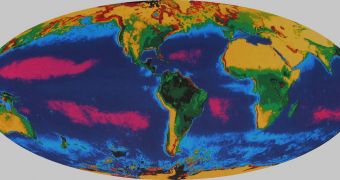Ancient civilizations thought the Earth was flat and carried on the back of giant turtles...
But Aristotle and other ancient Greek scholars came up with the idea that Earth was round. "This was based on a number of observations, such as the fact that departing ships not only appeared smaller as they sailed away but also seemed to sink into the horizon, as one might expect if sailing across a ball", said geographer Bill Carstensen of Virginia Tech in Blacksburg.
If you look at a photo of the Earth taken from space, our planet appears round, the "Blue Marble," as astronauts fondle it. But this can be deceived as Planet Earth is not perfectly round, as Isaac Newton firstly proposed. Newton believed Earth was an oblate spheroid: squashed at its poles and swollen at the equator.
This proved to be true: the distance from Earth's nucleus to sea level is about 21 km (13 mi) larger at the equator than at the poles. "Instead of Earth being like a spinning top made of steel, it has a bit of plasticity that allows the shape to deform very slightly. The effect would be similar to spinning a bit of Silly Putty, though Earth's plasticity is much, much less than that of the silicone plastic clay so familiar to children", explained geologist Vic Baker at the University of Arizona in Tucson.
But our planet is not a perfect oblate spheroid, as its mass is not even distributed.
Greater mass means stronger gravitational pull, "creating bumps around the globe," said geologist Joe Meert at the University of Florida in Gainesville.
Other factors also establish Earth's form: tectonic movements, meteors and the gravitational pull of the moon and sun. "There's also postglacial rebound, with the crust and mantle that were depressed by the huge ice sheets that sat on the surface during the last ice age now rebounding upward on the order of a centimeter a year," notes geophysicist Richard Gross at the Jet Propulsion Laboratory in Pasadena, California.
To balance Earth's mass distribution and stabilize its spin, "the entire surface of the Earth will rotate and try to redistribute mass along the equator, a process called true polar wander," said Meert.

 14 DAY TRIAL //
14 DAY TRIAL //